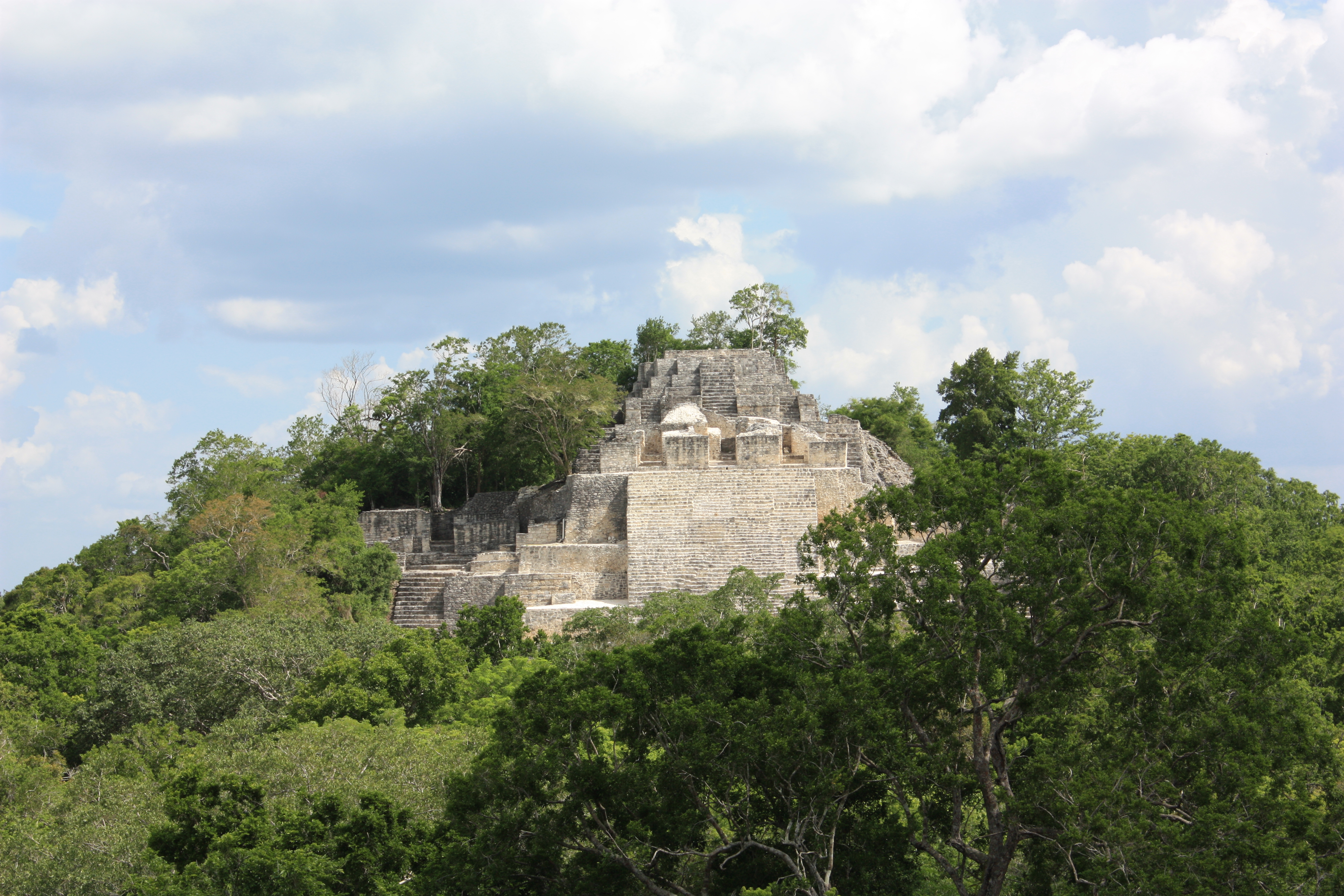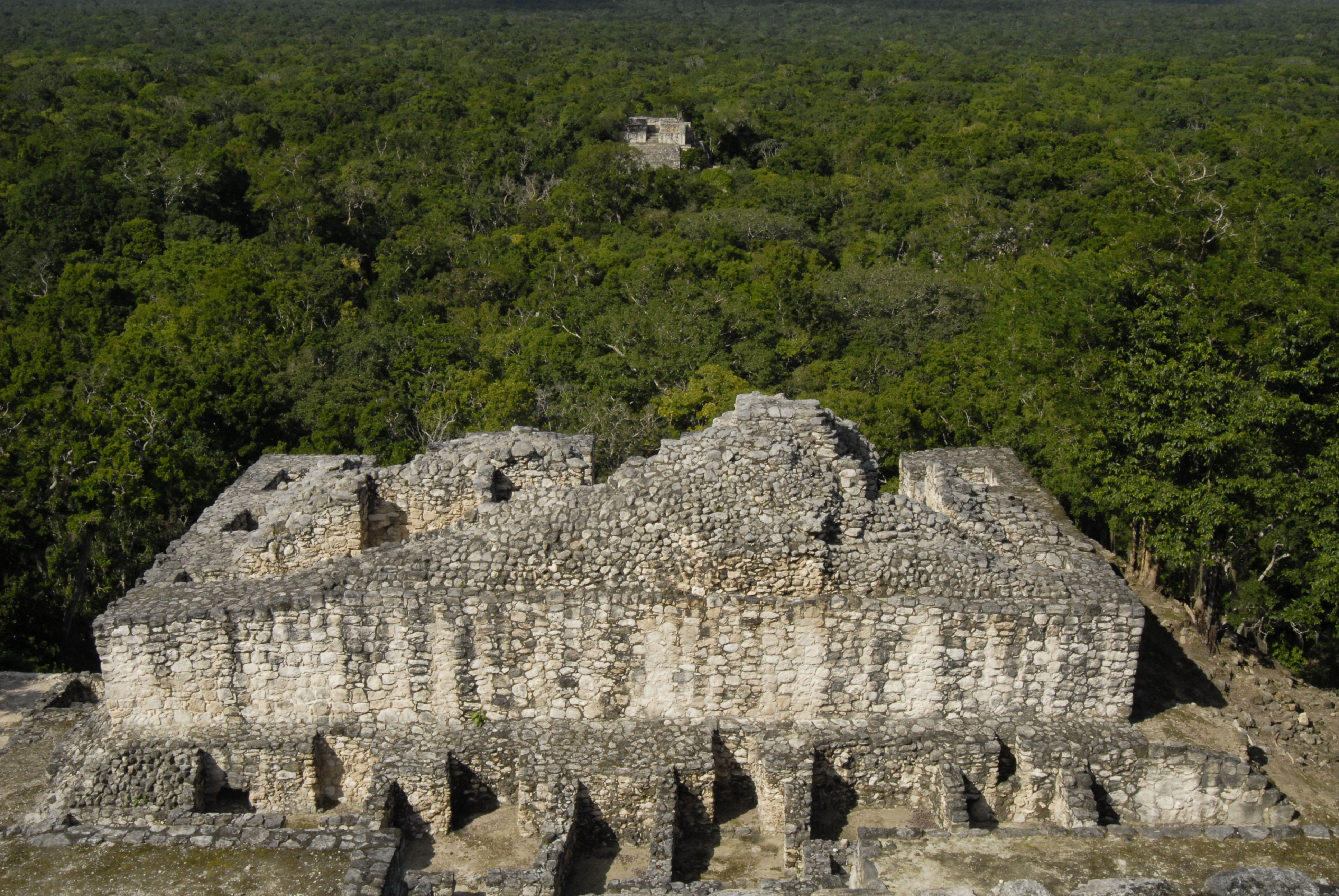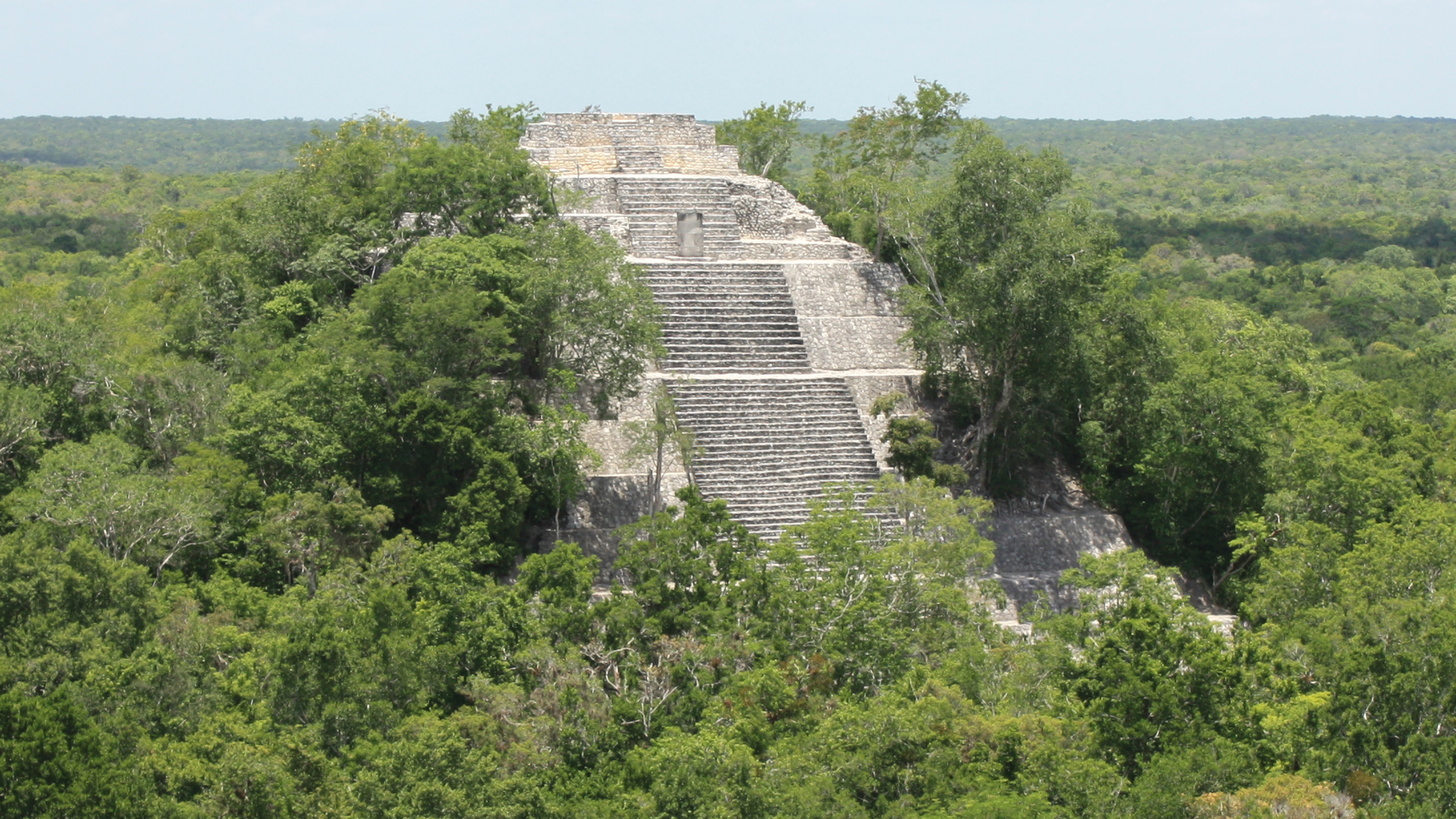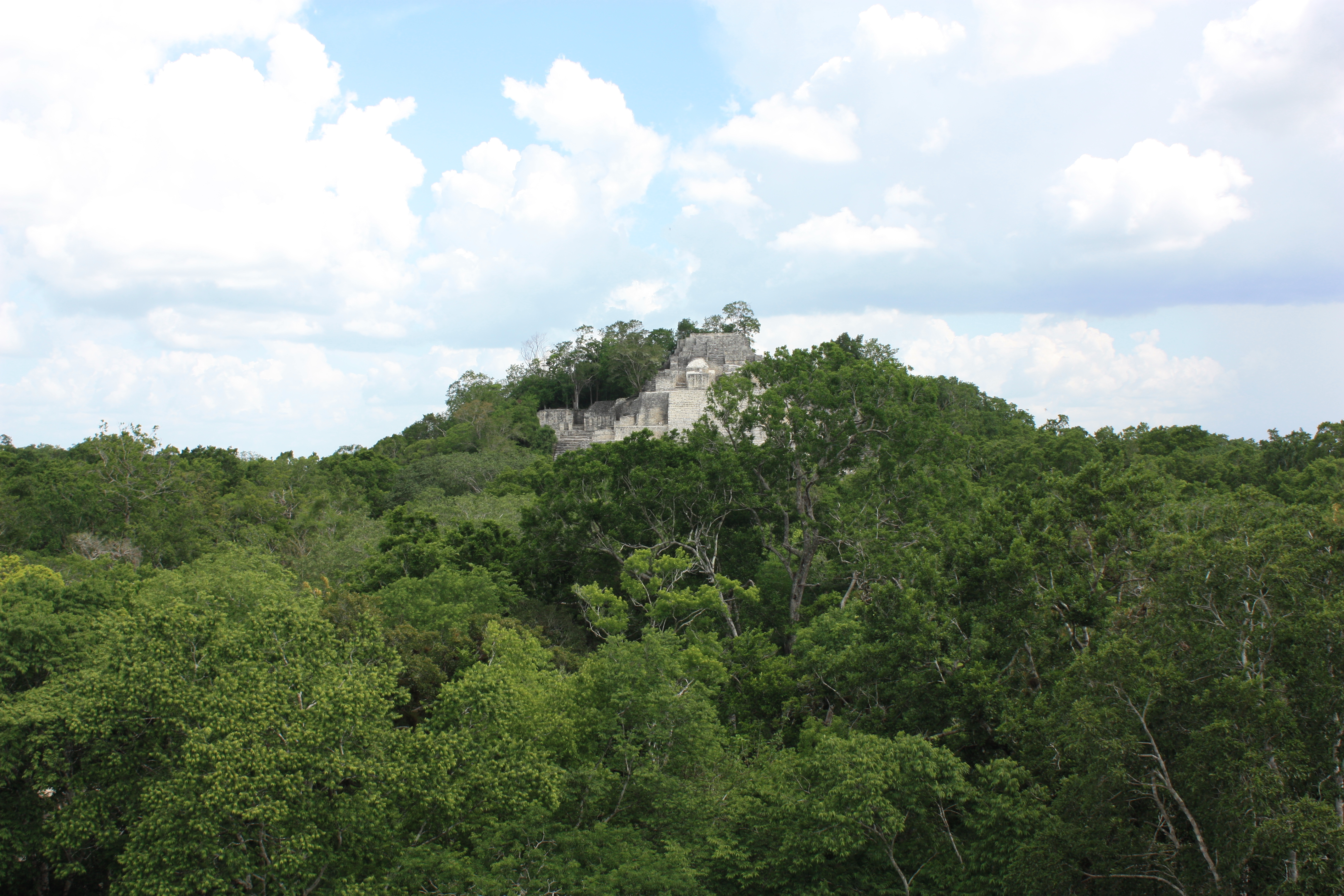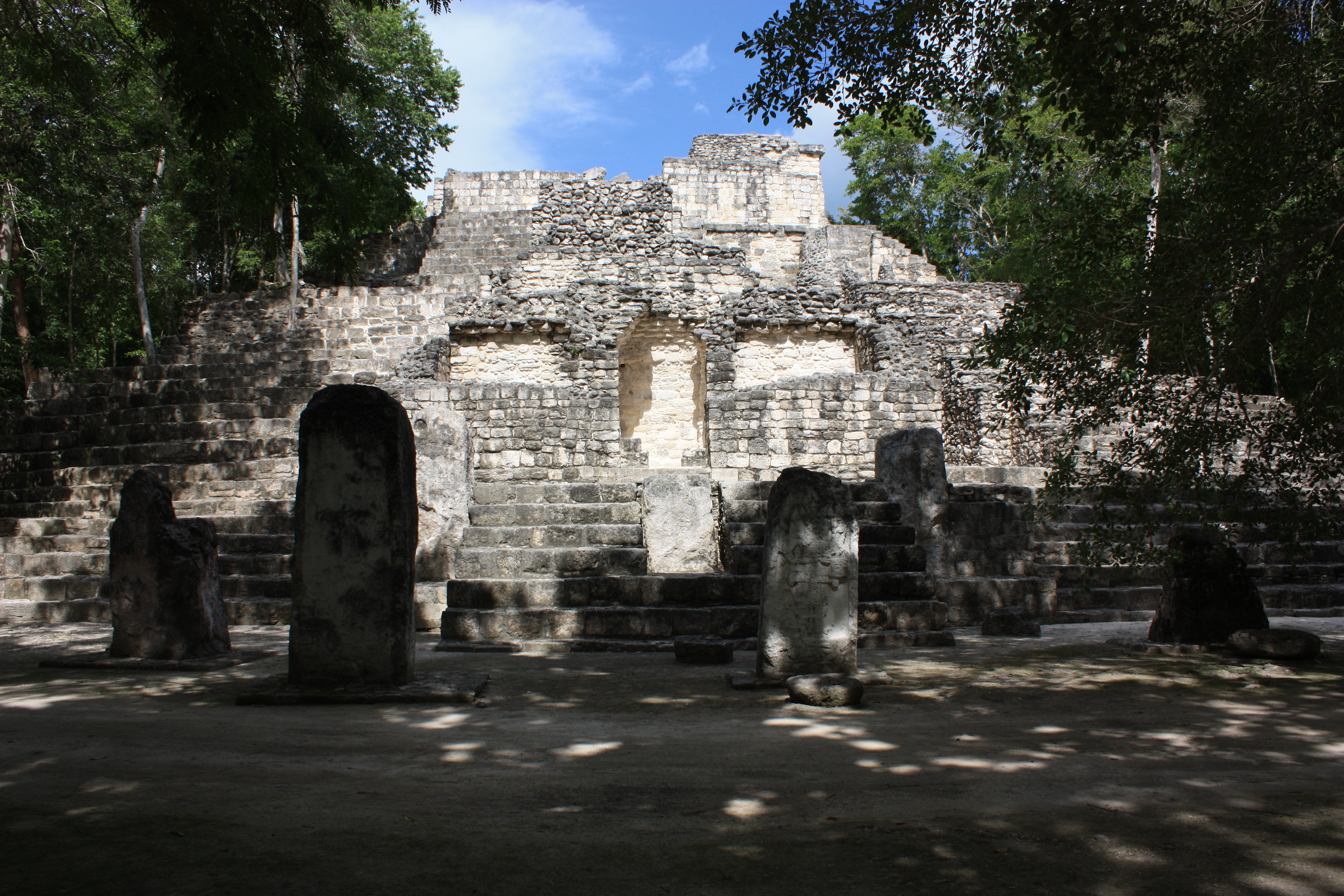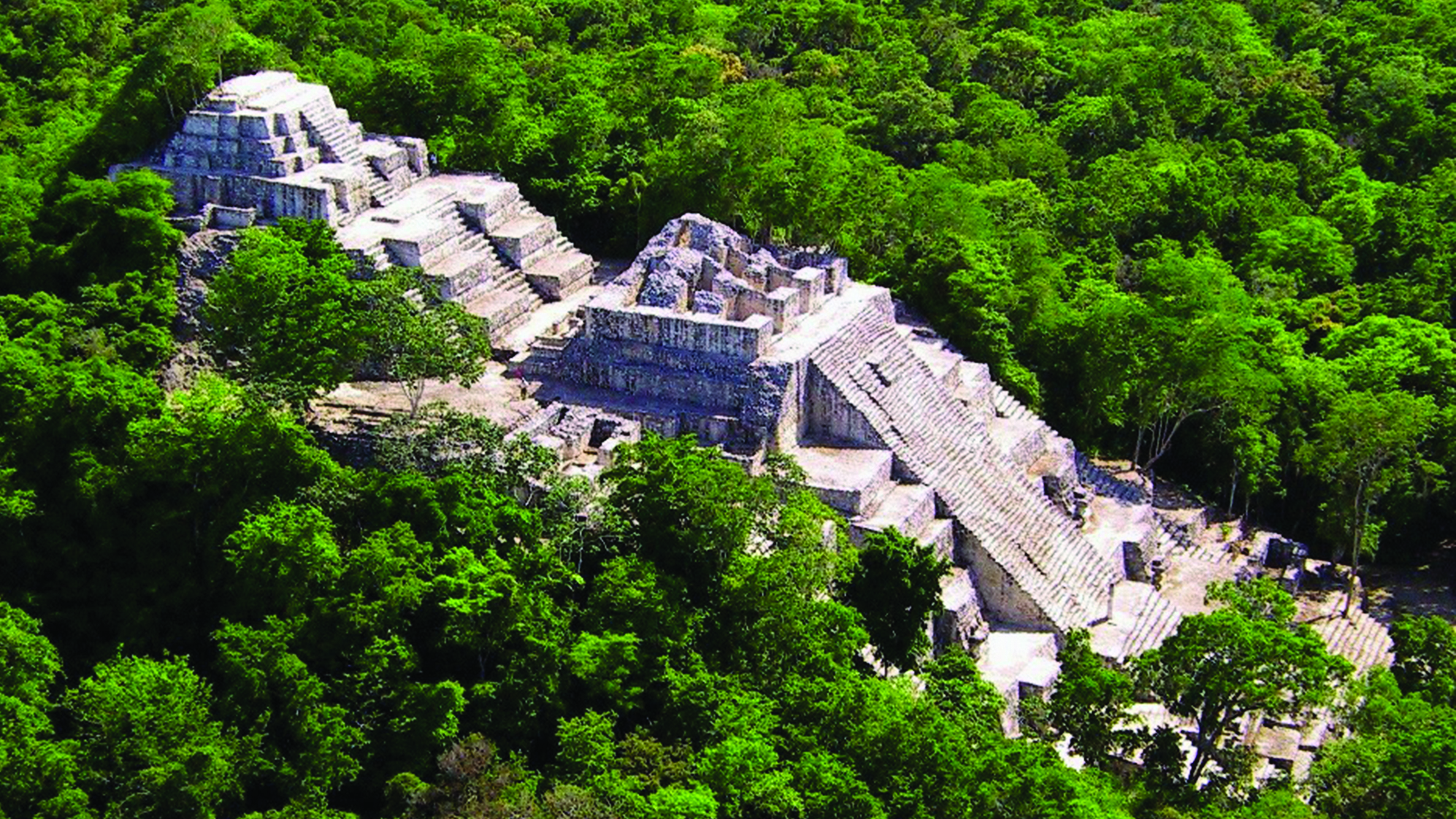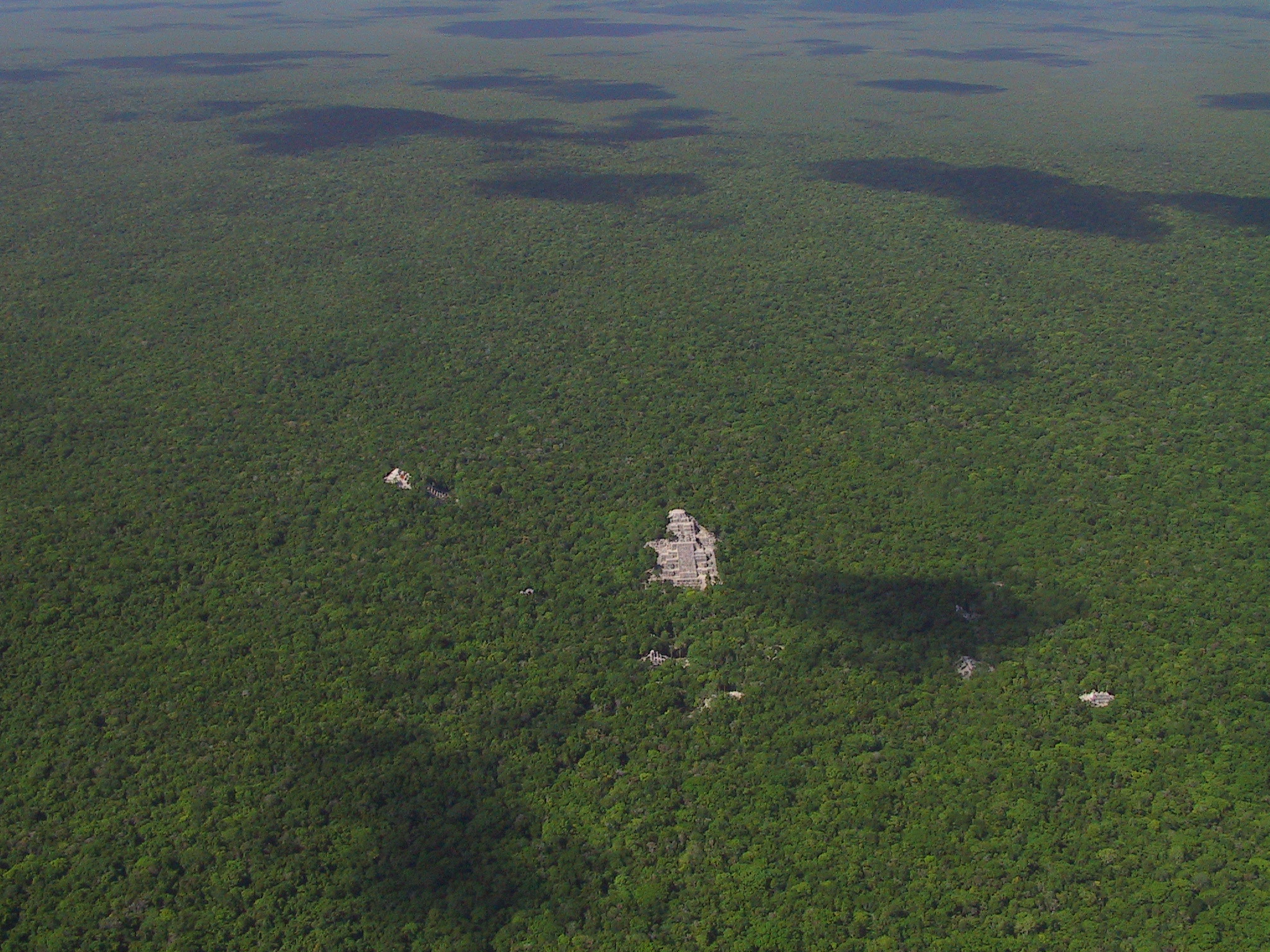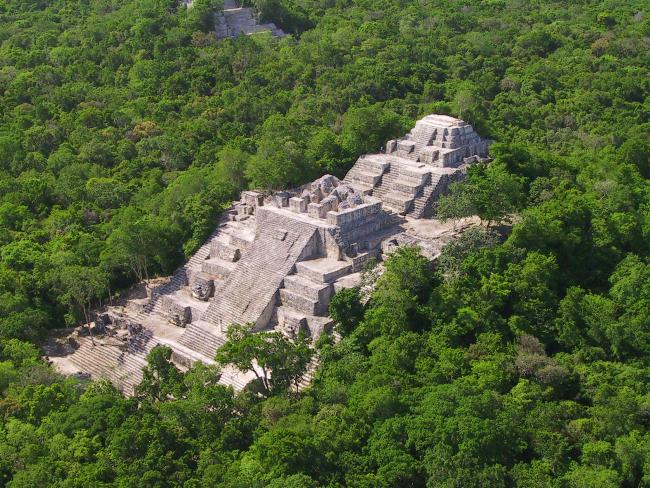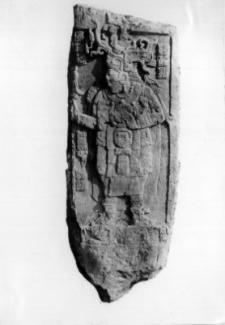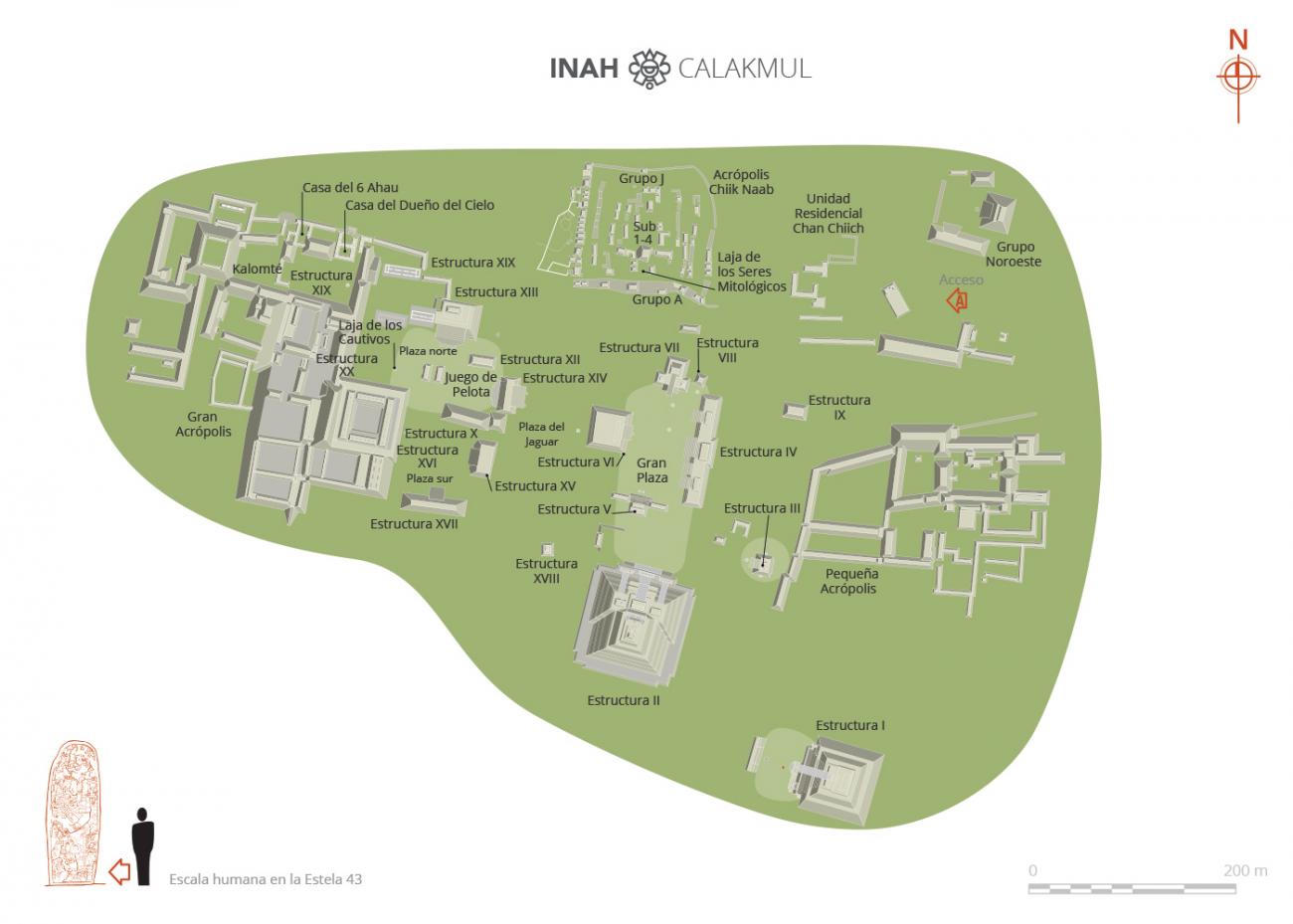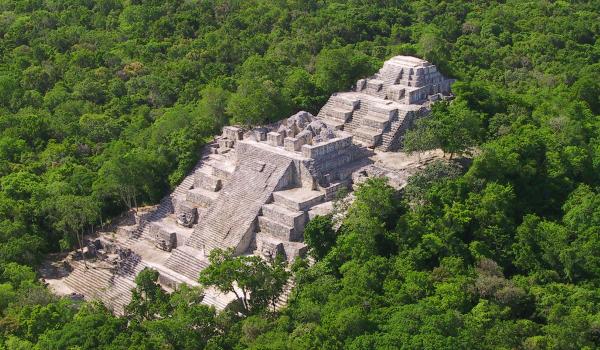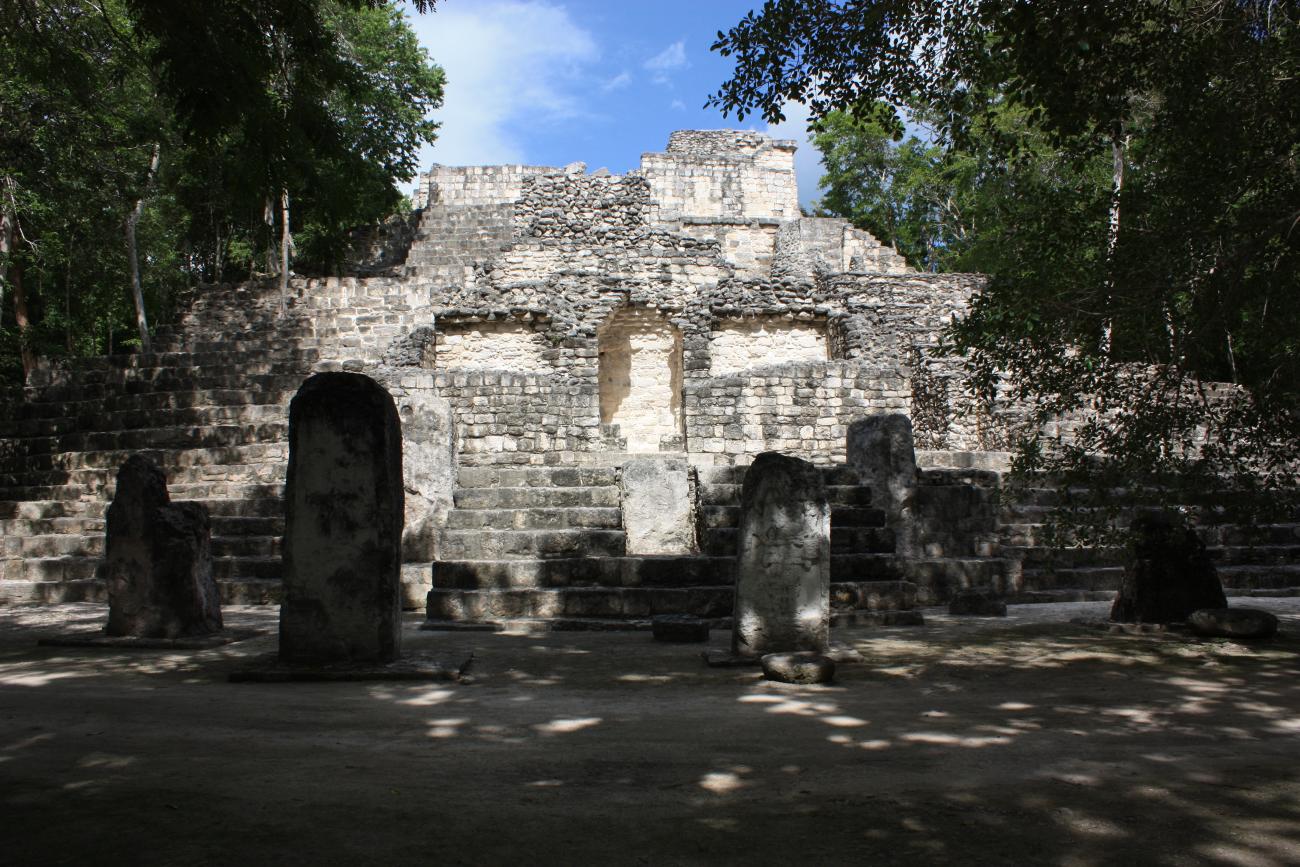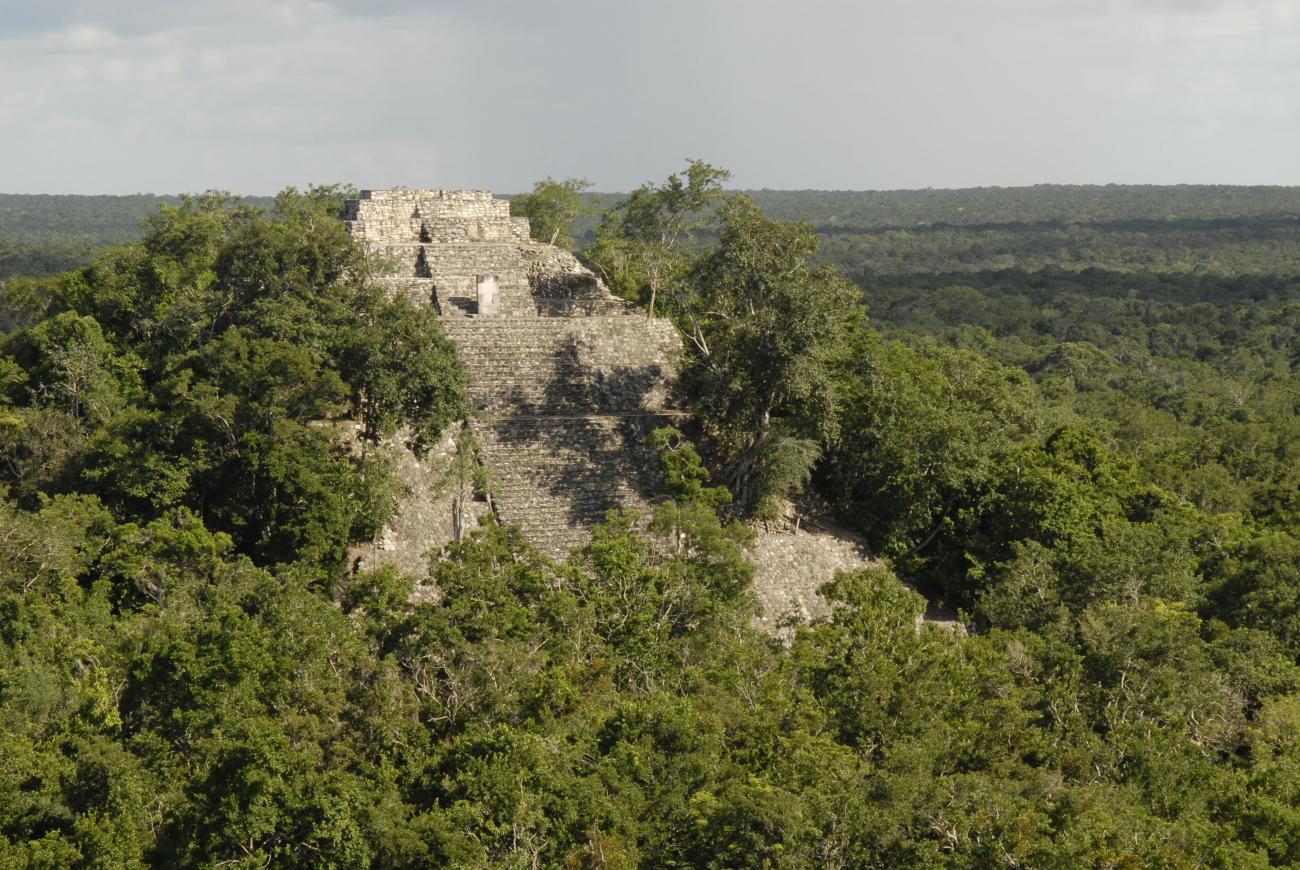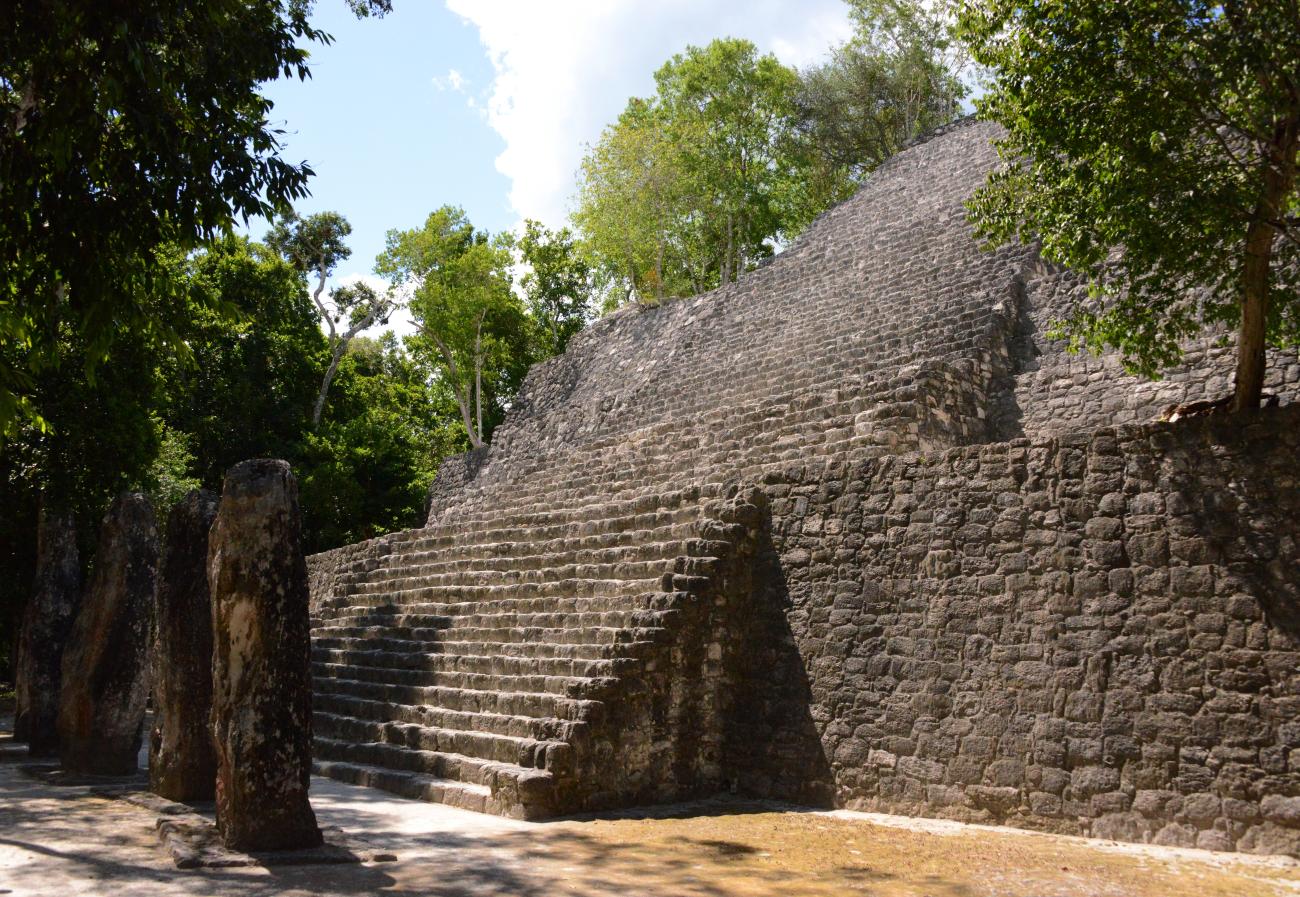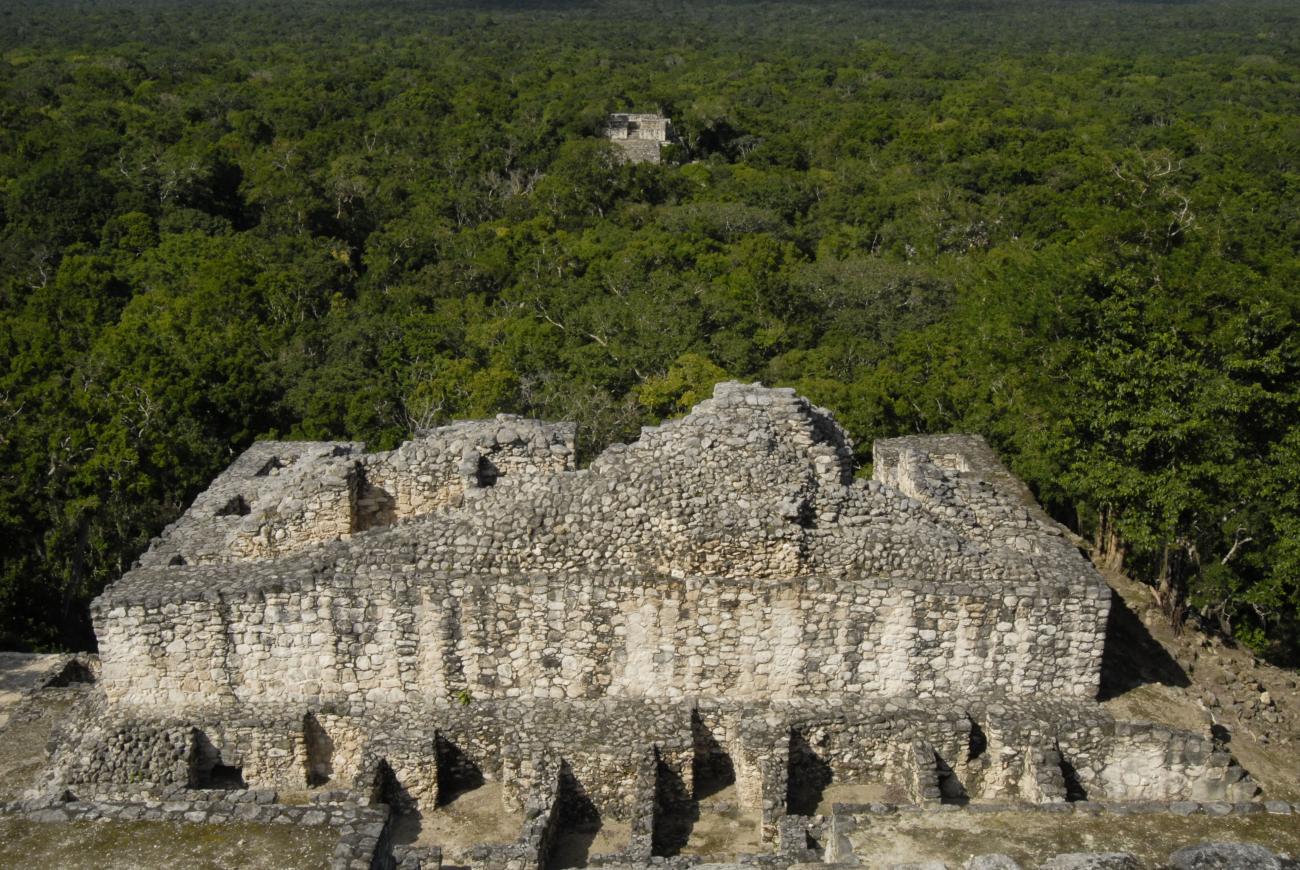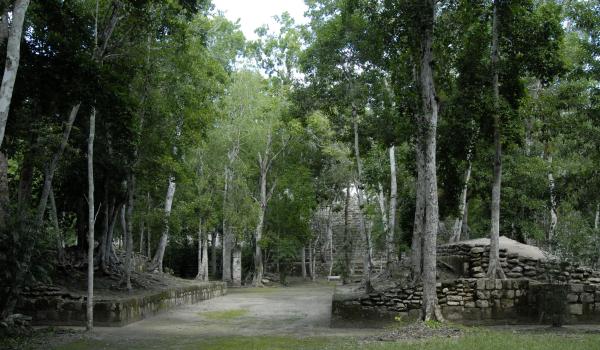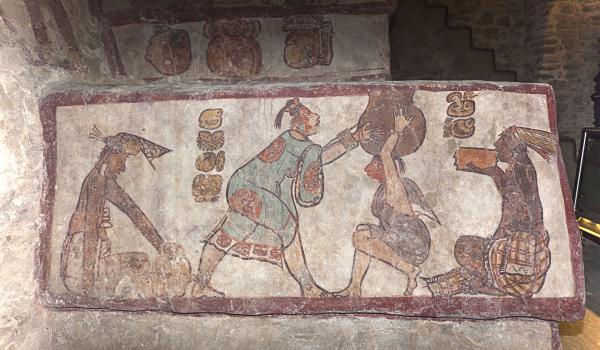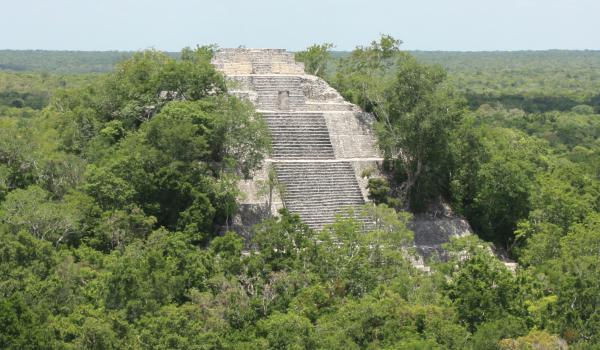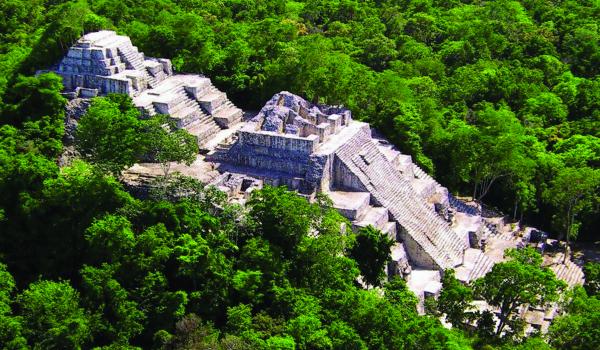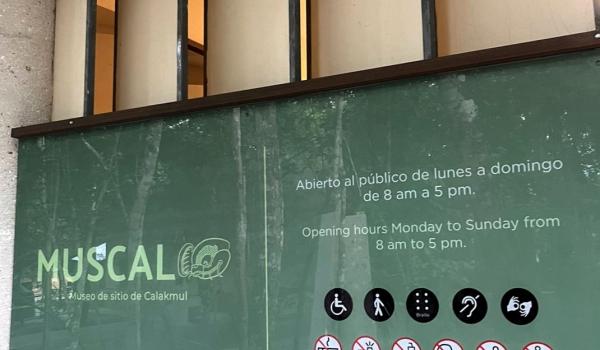Inhabited since the very distant past, from around 2000 BC, Calakmul developed into the most important city of the Mayan lowlands between the years 250 BC and 700 AD. No other Maya city located in the territory of modern-day Mexico had such great significance. It challenged and defeated Tikal, the principal city of the vast region covering the southern Yucatan peninsula and northern Guatemala, before eventually being defeated by the same rival early in the eighth century AD. After a long period of decline, Calakmul was abandoned and the jungle engulfed its plazas and wrapped itself around the city’s palaces, altars and temples. The inhabitants dispersed and formed new towns, or joined other settlements.
The archeological site of Calakmul covers an area of 27 square miles and contains more than 6,000 structures. At its peak, it ruled over a territory measuring 5,000 square miles. In the early sixteenth century, a Spanish conquistador and explorer, Alonso de Ávila, discovered the ruins of Calakmul and other Maya sites of the Classic period in the area known today as Campeche: he found them abandoned and overrun by dense tropical vegetation. He also observed that the local indigenous people would occasionally visit some parts of the city for ritual purposes.
Five centuries later, the biologist Cyrus Lundell rediscovered the site in 1931 and passed on information the following year to the famous US researcher, Sylvanus G. Morley, who visited it with a particular interest in the glyphs on the stelae. Another 50 years would pass before a team of archeologists from the Autonomous University of Campeche and the INAH finally started excavations and began to reveal the site’s remarkable history.
In the sixth century AD, the territory of the ancient Maya consisted of some 60 provinces. A handful of these groups were eager to rule over a majority: Tikal achieved this control through the use of force; Calakmul also subjugated other communities, initially through diplomacy, trade, and dynastic alliances, and ultimately also through the use of weapons. Epic clashes took place between both of these powerful city-states: Calakmul was initially victorious—and became capital of Cuchcabal or the “Kingdom of the Serpent’s Head”—in 562 AD. Tikal later regrouped, formed new alliances, and defeated its enemy in 695. This led to Calakmul’s decline and ultimately its demise. The latest date found on a stela at the site gives the year 909. However, other Maya settlements of the Classic period did not survive either; some were eclipsed in the ninth century or disappeared over the course of the following century. This was the period when Maya civilization is understood to have collapsed.
The success in deciphering the Maya hieroglyphs, which owes so much to the groundbreaking work of the Russian scholar Yuri V. Knorosov (1922-1999), made it possible to reconstruct parts of this history. Calakmul is the Maya city with the largest number of stelae, with 120 in total; these recount the lives and deeds of kings, queens, princes and captains. Other allied or enemy cities confirm, or further specify, this information on their own stelae. The names and partial history of 18 kings of Calakmul have thus been revealed, such as the “Coiled Serpent” (Uneh Chan, 579-611 AD), “Yuknom the Great” (636-686 AD) and “Jaguar Claw” (Yich’ak K’aak’, 686-698 AD). We also now know that Calakmul had an emblem-glyph to indicate the extent of its territory (a serpent’s head) and two toponyms to refer to the center of the city: Ox Te Tun (“three stones”, in possible allusion to a mythical primordial fire), and Chiik Naab (“house of the water lily”).
The archeological site of Calakmul contains five large complexes linked to the Grand Central Plaza, and these are interconnected by ancient roads known as “sacbes." The monumental Structure II is located on the south side of the Plaza—this is the second-highest Maya pyramid (at 180 feet high), after the one in Toniná, Chiapas. On the north side is Structure VII, with Structures III, IV and VI to the east, each one impressive and built to last in the Petén style. Some of the stelae date from the early period (400 BC) and others correspond to the period when the city flourished. They are veritable jewels of Maya art and contain a diversity of texts and accounts of the society that created them.
The Calakmul Biosphere Reserve was established in 1989. In 1993, it was registered as part of the UNESCO’s Man and the Biosphere Programme. In 2002, Calakmul was listed as a World Heritage Site by the same organization, and this designation was broadened in 2014 to become a Mixed Natural and Cultural Heritage Site.






